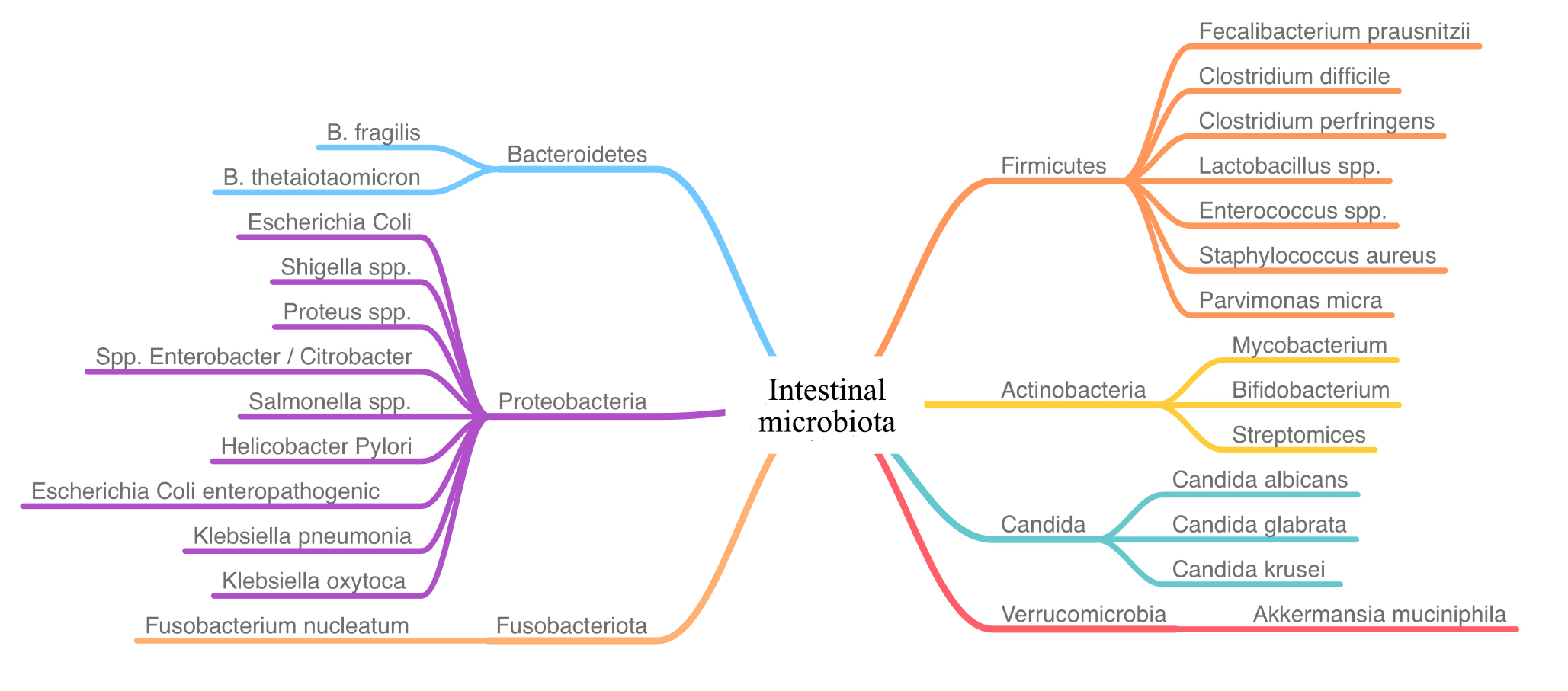Gut microbiota and its correlations with body mass index and age in patients with type 2 diabetes mellitus and thyroid dysfunction
DOI:
https://doi.org/10.15587/2519-4798.2024.308331Keywords:
gut microbiota correlations, diabetes mellitus, thyroid, body mass indexAbstract
Modern studies show that it is the transit microflora, the percentage of which is negligible compared to the total volume of the intestinal microbiota, that can cause severe damage and cause the appearance of chronic and acute diseases not only of the intestines but also of the immune, nervous, endocrine systems, etc. Instead, the obligate intestinal microbiota and even the opportunistic microbiota exhibit a number of beneficial properties, ranging from the synthesis of short-chain fatty acids, butyrate, and acetate to promoting the synthesis of vitamins and hormones such as dopamine, serotonin, etc. At the same time, the adverse effects of the gut microbiota cannot be discounted.
The aim. The study aims to find correlations between gut microbiota, body mass index, and age in patients with type 2 diabetes and thyroid dysfunction..\
Materials and methods. The study included 84 patients with type 2 diabetes, obesity, and thyroid dysfunction. To analyze the composition of the intestinal microbiota, fecal samples were taken, and the quantitative and qualitative composition was calculated using the principle of PCR sequencing. Statistical methods of comparison and correlation of variables were used.
Results. In patients, several significant correlations were found between the gut microbiota and the parameters studied. A negative correlation was found between body mass index and Bifidobacterium spp. and Escherichia coli, and a positive correlation was found between body mass index and some opportunistic pathogens. Thus, with Shigella spp. and Staphylococcus aureus, there is a direct weak reliable relationship, while an inverse reliable relationship with Helicobacter pylori. Interesting correlations were found with a tendency to confidence with Salmonella spp. and Bacteroides thetaiotaomicron direct weak and a tendency to probable feedback between BMI and Faecalibacterium prausnitzii and Candida spp.
Conclusion. We found that body mass index has a greater impact on the gut microbiota than age. Also, the data obtained indicate that obesity negatively affects the number of some beneficial bacteria. We can assume that, like metformin, one of the most common drugs for the treatment of type 2 diabetes mellitus, it can affect the composition of the intestinal microbiota
References
- Moskva, K., Kikhtyak, O., Lapovets, L., Urbanovych, A. (2022). Changes in the gut microbiota under the influence of metformin, pioglitazone, and levothyroxine in overweight patients with type 2 diabetes mellitus and hypothyroidism. Problems of Endocrine Pathology, 79 (4), 45–51. https://doi.org/10.21856/j-PEP.2022.4.06
- Vatseba, T., Skrypnyk, N. (2013). The Method of the of Hypothyroidism in Iodine Deficiency Treatment Optimization by Acting on Insulin Resistance. Liky Ukrainy, 8 (174), 62–66.
- Kapadia, K. B., Bhatt, P. A., Shah, J. S. (2012). Association between altered thyroid state and insulin resistance. Journal of Pharmacology and Pharmacotherapeutics, 3 (2), 156–160.
- Biondi, B., Cooper, D. S. (2007). The Clinical Significance of Subclinical Thyroid Dysfunction. Endocrine Reviews, 29 (1), 76–131. https://doi.org/10.1210/er.2006-0043
- Pankiv, V. (2021). Blood level of thyroid-stimulating hormone as a basic diagnostic marker and criterion of success in the treatment of thyroid diseases. International journal of endocrinology, 13 (2), 147–151. https://doi.org/10.22141/2224-0721.13.2.2017.100604
- Brenta, G. (2011). Why Can Insulin Resistance Be a Natural Consequence of Thyroid Dysfunction? Journal of Thyroid Research, 2011, 1–9. https://doi.org/10.4061/2011/152850
- Moskva, K., Kikhtyak, O., Lapovets, L., Lanyush, F. (2023). Comparison of changes in the gut microbiota influenced by combinations of liraglutide with metformin and pioglitazone with metformin in overweight patients with diabetes. 59th EASD Annual Meeting of the European Association for the Study of Diabetes. Diabetologia, 66 (Suppl 1), 331. https://doi.org/10.1007/s00125-023-05969-6
- Thomas, A. (2006). Lang and Michelle Secic. How to report statistics in medicine: annotated guidelines for authors, editors, and reviewers, Philadelphia: American College of Physicians, 490.
- Pinart, M., Dötsch, A., Schlicht, K., Laudes, M., Bouwman, J., Forslund, S. K. et al. (2021). Gut Microbiome Composition in Obese and Non-Obese Persons: A Systematic Review and Meta-Analysis. Nutrients, 14 (1), 12. https://doi.org/10.3390/nu14010012
- Lai, S., Yan, Y., Pu, Y., Lin, S., Qiu, J.-G., Jiang, B.-H. et al. (2023). Enterotypes of the human gut mycobiome. Microbiome, 11 (1). https://doi.org/10.1186/s40168-023-01586-y
- Shuai, M., Fu, Y., Zhong, H., Gou, W., Jiang, Z., Liang, Y. et al. (2022). Mapping the human gut mycobiome in middle-aged and elderly adults: multiomics insights and implications for host metabolic health. Gut, 71 (9), 1812–1820. https://doi.org/10.1136/gutjnl-2021-326298

Downloads
Published
How to Cite
Issue
Section
License
Copyright (c) 2024 Khrystyna Moskva, Olesya Kikhtiak, Lyubov Lapovets

This work is licensed under a Creative Commons Attribution 4.0 International License.
Our journal abides by the Creative Commons CC BY copyright rights and permissions for open access journals.
Authors, who are published in this journal, agree to the following conditions:
1. The authors reserve the right to authorship of the work and pass the first publication right of this work to the journal under the terms of a Creative Commons CC BY, which allows others to freely distribute the published research with the obligatory reference to the authors of the original work and the first publication of the work in this journal.
2. The authors have the right to conclude separate supplement agreements that relate to non-exclusive work distribution in the form in which it has been published by the journal (for example, to upload the work to the online storage of the journal or publish it as part of a monograph), provided that the reference to the first publication of the work in this journal is included.








